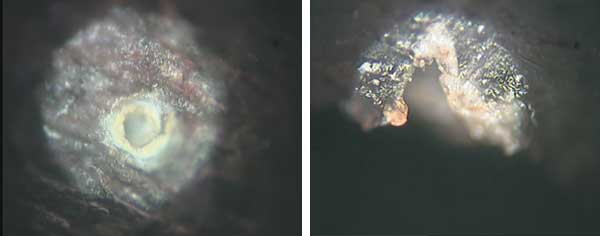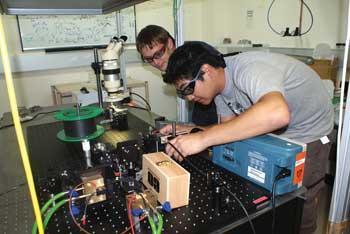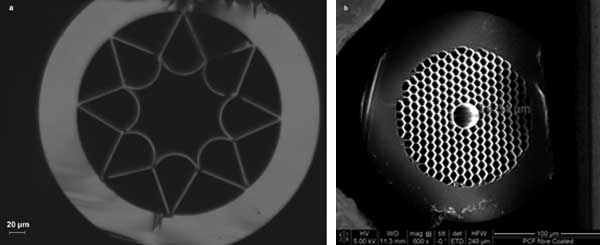Advances in fiber lasers will benefit laser surgery applications
Surgery requires a deft hand and a fluid touch.
And yet, for some time, the most common method of delivery of surgical lasers was the use of mechanical articulated arms. Many clinicians were reluctant to use the lasers because they felt they were too heavy or cumbersome, and that they restricted their movement in the operating theater.
“Therefore, the benefits of using laser light for surgery were being offset by the restriction to the surgeon’s skills that the articulated arms can impose,” said Jonathan Shephard, a researcher at the Institute of Photonics and Quantum Sciences at Heriot-Watt University in Edinburgh, Scotland.
At the same time, there is a trend toward minimally invasive procedures – from cosmetic surgery to epilepsy treatment – to which articulated-arm delivery systems are not especially well suited.
As a result, “we had the impression that the uptake of lasers in surgical procedures was being held back,” Shephard said. Because of these limitations in delivery, the promise of lasers in the operating theater was yet to be fully realized.
Enter fiber lasers. Although they were first described in the 1980s, fiber lasers have only in the past five years become competitive, commercially available products, with applications in marking, cutting and welding, and laser weaponry – as well as in the biomedical arena.
Fiber lasers offer a number of advantages, especially with respect to surgical applications. Not least, they are compact and lightweight. Because the fibers can be bent and coiled, the lasers are often no bigger than a shoebox, considerably smaller than solid-state lasers with comparable powers. This and their high wall-plug efficiency – typically greater than 30 percent – combine to make them well suited for surgical applications.

New fibers in development at Heriot-Watt University and the University of Bath could contribute to a range of tissue-ablation applications, including ablation of hard tissue such as bone. Courtesy of Artur Urich.
And because the delivery system (that is, the fiber) is flexible, the lasers can be easily integrated into endoscopes or other surgical devices. Thus, they can help to overcome the potential awkwardness of articulated-arm-based systems, one of the most significant obstacles to adoption.
Disruptive technology for microsurgery
One of the many features of fiber lasers is the high-resolution focusing spot facilitated by the excellent diffraction-limited beam quality, which can be particularly useful in micro- and nanosurgery.
“The high-energy femtosecond fiber lasers are emerging as a disruptive technology for microsurgery, where the damage to surrounding tissue or nerves must be eliminated or minimized,” said Jian Liu, president of PolarOnyx Inc. of San Jose, Calif. The company is developing a smart surgical tool that uses a high-energy (500-μJ) femtosecond fiber laser and an advanced laser-induced breakdown spectroscopy system for tissue ablation.

High-energy femtosecond fiber lasers such as this 500-μJ femtosecond fiber laser product from PolarOnyx Inc. can help minimize or even eliminate damage to surrounding tissue or nerves during microsurgery. Courtesy of Jian Liu/PolarOnyx Inc.
Liu cited several recent breakthroughs that have made this technology possible, including a reliable all-fiber seed oscillator, a novel fiber-based dispersion management stretcher and more. “To date, the new technology has resulted in reliable high-energy (from 1 to 500 μJ) femtosecond fiber laser products, which are suitable for surgery.”
Laser surgery applications can also benefit from researchers and companies extending fiber lasers into the mid-IR. Because of skin’s high water content, laser energy in this region – particularly around 2.9 μm – is strongly absorbed,
and therefore tissue can be ablated with minimal heat damage.
“The end result is that tissue can be incised with minimal carbonization and scarring,” said Darren Hudson, an investigator with the Centre for Ultra-high Bandwidth Devices for Optical Systems (CUDOS) at the University of Sydney.
Researchers are actively pursuing mid-IR fiber lasers – Er:YAG lasers operating in this region are common, but they necessitate use of the articulated arms that surgeons find so cumbersome – and have found success with the erbium-doped ZBLAN fiber laser (ZBLAN is essentially a special type of glass based on fluoride). And they continue to report advances with these lasers.
At the same time, Hudson, along with colleague Stuart Jackson, an associate professor, has proposed an alternative
approach using another rare-earth element: holmium. Holmium has a wavelength approximately 100 nm longer than that of erbium, so it offers a better match with the fundamental water peak, which enables minimized carbonization and scarring during laser skin surgery, “even relative to a mid-IR erbium system,” Hudson said.

University of Sydney researchers have proposed using the rare-earth element holmium as an alternative to erbium-doped fiber lasers, as it could help to minimize scarring during mid-IR laser skin surgery. Shown here are investigator Darren Hudson and graduate student Tomonori Hu working on a holmium fiber laser. Courtesy of Darren Hudson.
The researchers need to create higher-power systems, though, if the laser is to be used for surgical applications. “At the moment, our lasers can produce a few watts of optical power,” Hudson noted. “While this may not seem like much relative to your 60-W lightbulb, we can focus the energy down to an extremely small spot (~10 μm) and produce very high intensities. However, for surgical applications, this power will need to be pushed even higher, and the reliability and robustness of these lasers will need to be improved.”
In the meantime, the researchers are working to develop pulsed versions of the holmium-based fiber laser systems – in particular, implementing mode locking to produce short bursts of high-intensity light. This, Hudson said, will allow them to achieve higher peak powers than they could with a continuous-beam system.
They have already demonstrated a system that can produce 20-ps pulses with a peak power on the order of several hundred watts – and the potential to reach well above 1 kW. A recently awarded grant from the Australian Research Council is helping to advance the project further, and they hope to produce subpicosecond pulses by early next year.
Robust, practical silica fiber lasers
Other research groups are looking to extend the utility of all-silica fibers. Shephard and colleagues have been working to develop “robust and practical” all-silica fibers that can operate in the mid-IR region – beyond the normal wavelength transmission range of silica – to deliver Er:YAG laser energy. “Additionally, we wanted to produce a small-diameter (on the order of 200 μm) flexible fiber with a stable output independent of bending,” Shephard said.
In a recent Journal of Non-Crystalline Solids article, Shephard and others, including first author Artur Urich and colleagues at Heriot-Watt University and the University of Bath, described two silica hollow-core microstructured fibers for laser surgery applications in the mid-IR. Using the fibers, they demonstrated guidance of laser pulses with high-enough energies to ablate both soft and hard biological tissues.

A team of researchers at Heriot-Watt University and the University of Bath have described two silica hollow-core microstructured fiber designs – negative-curvature fiber (a) and photonic-bandgap fiber (b) – that can help to advance mid-IR laser surgery applications. Courtesy of Artur Urich.
The fibers take advantage of two recently developed fiber designs: negative-curvature fiber and a photonic-bandgap fiber (also referred to as the hollow-core photonic-crystal fiber, HC-PCF). “The fibers are physically very flexible and, particularly in the case of the hollow-core photonic crystal fibers, show low bend sensitivity,” Shephard said. “The HC-PCF can be bent to radii of a few millimeters with no increase in loss and still deliver fluence sufficient for tissue ablation.”
The negative-curvature fibers show a bend-dependent loss but are able to deliver sufficient fluence for hard-tissue ablation down to bend radii of tens of millimeters.
Still, the Heriot-Watt investigators believe that this can be improved and, with their collaborators at Bath, are working to optimize the fibers. They envision the fibers advancing a range of tissue-ablation and other applications.
“We are currently working with a number of clinicians to develop novel procedures to address particular medical conditions where restricted access inhibits traditional surgical techniques,” Shephard said.